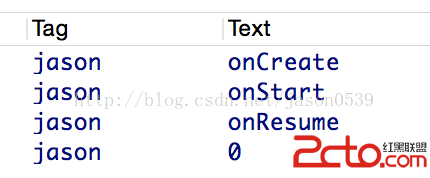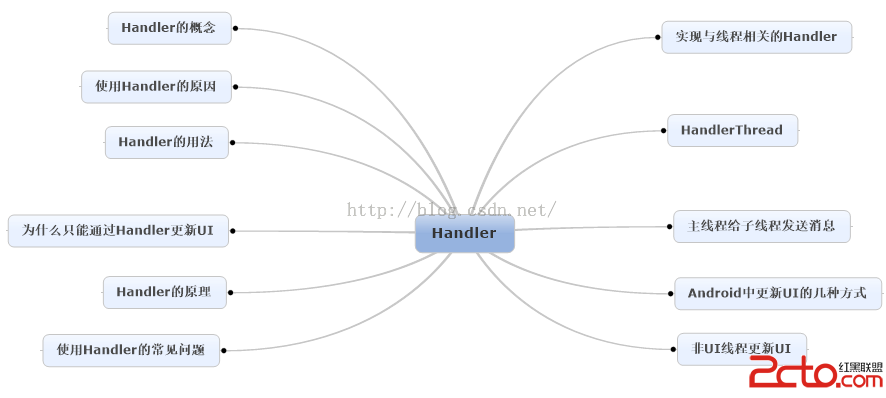編輯:關於Android編程
本文實例所述為Android天氣預報之解析天氣數據的代碼,可實現獲取HttpGet對象讀取天氣網站天氣數據,並從數據中解析出天氣數據,比如溫度、溫度、風力、風向、未來幾天天氣趨勢、當天天氣狀況、空氣污染指數等信息,還包括了調用對應的圖片或天氣動畫文件,對於開發android天氣預報程序的可以參考本文實例。
具體功能代碼如下:
import java.io.IOException;
import java.text.SimpleDateFormat;
import java.util.ArrayList;
import java.util.List;
import java.util.Locale;
import net.tsz.afinal.FinalHttp;
import net.tsz.afinal.http.AjaxCallBack;
import org.apache.http.HttpResponse;
import org.apache.http.HttpStatus;
import org.apache.http.client.ClientProtocolException;
import org.apache.http.client.HttpClient;
import org.apache.http.client.methods.HttpGet;
import org.apache.http.impl.client.DefaultHttpClient;
import org.apache.http.util.EntityUtils;
import org.json.JSONException;
import org.json.JSONObject;
import org.lmw.weather.MyApp;
import org.lmw.weather.entity.WeatherEntity;
import android.app.Activity;
import android.os.Handler;
import android.os.Message;
/**
* 解析天氣數據
* @author Dave
*/
public class WeatherData {
private Activity activity;
private FinalHttp fh;
public static String def_weather_key="def_weather";
public WeatherData(Activity activity) {
this.activity = activity;
fh = new FinalHttp();
fh.configTimeout(1000 * 3);
}
public void getData(final String cityId,final Handler hd) {
StringBuffer sb_url = new StringBuffer();
sb_url.append("http://0.qnweather.duapp.com/weather.php?uri=");
sb_url.append("http://m.weather.com.cn/data/");
sb_url.append(cityId);
sb_url.append(".html");
final Message msg=new Message();
fh.get(sb_url.toString(), new AjaxCallBack() {
@Override
public void onSuccess(Object t) {
super.onSuccess(t);
MySharedPreferences.writeMessage(activity, "def_weather",t.toString());
msg.what=0;
msg.obj=parseJson(t.toString());
hd.sendMessage(msg);
}
@Override
public void onFailure(Throwable t, int errorNo, String strMsg) {
super.onFailure(t, errorNo, strMsg);
System.out.println("-------errorNo---------"+errorNo);
msg.what=-1;
msg.arg1=errorNo;
msg.obj=MySharedPreferences.readMessage(activity, def_weather_key, "");
hd.sendMessage(msg);
}
});
}
private String connServerForResult(String strUrl) {
// 獲取HttpGet對象
HttpGet httpRequest = new HttpGet(strUrl);
String strResult = "";
try {
// HttpClient對象
HttpClient httpClient = new DefaultHttpClient();
// 獲得HttpResponse對象
HttpResponse httpResponse = httpClient.execute(httpRequest);
if (httpResponse.getStatusLine().getStatusCode() == HttpStatus.SC_OK) {
// 取得返回的數據
strResult = EntityUtils.toString(httpResponse.getEntity());
}
} catch (ClientProtocolException e) {
e.printStackTrace();
} catch (IOException e) {
e.printStackTrace();
} catch (Exception e) {
e.printStackTrace();
}
System.out.println("rresult" + strResult);
return strResult; // 返回結果
}
// 數據解析
private WeatherEntity parseJson(String strResult) {
WeatherEntity weather = null;
try {
JSONObject jsonObj = new JSONObject(strResult.replace("℃", "°"))
.getJSONObject("weatherinfo");
weather = new WeatherEntity();
int ftime = jsonObj.getInt("fchh"); // 更新時間(整點)【更新時間確定temp屬於哪天】
int temp = 0; // 偏移
if (ftime >= 18 || ftime < 8) {
weather.setNight(true);
temp = 1;
}
MyApp.week = jsonObj.getString("week");// 今天星期幾
weather.setCity(jsonObj.getString("city")); // 城市
weather.setComfortable(jsonObj.getString("index")); // 舒適度
weather.setRefreshDate(getDate()); // 更新日期
weather.setRefreshTime(getTime()); // 更新時間
weather.setRefreshWeek(getWeek()); // 更新星期
weather.setPicIndex(jsonObj.getInt("img1")); // 當天天氣圖片編號
List<Integer> topPic = new ArrayList<Integer>(); // 最高溫時的圖片編號
if (temp == 1) {
topPic.add(getSavePic(activity));
} else {
topPic.add(getJsonPic(jsonObj, "img", 1 + temp));
savePic(activity, topPic.get(0));
}
topPic.add(getJsonPic(jsonObj, "img", 3 - temp));
topPic.add(getJsonPic(jsonObj, "img", 5 - temp));
topPic.add(getJsonPic(jsonObj, "img", 7 - temp));
weather.setTopPic(topPic);
List<Integer> lowPic = new ArrayList<Integer>(); // 最低溫時的圖片編號
lowPic.add(getJsonPic(jsonObj, "img", 2 - temp));
lowPic.add(getJsonPic(jsonObj, "img", 4 - temp));
lowPic.add(getJsonPic(jsonObj, "img", 6 - temp));
lowPic.add(getJsonPic(jsonObj, "img", 8 - temp));
weather.setLowPic(lowPic);
// ---------------------------以上為獲取圖片編號,暫且不管----------------------------------------------------------------------
List<String> tempList = new ArrayList<String>(); // 未來五天溫度(第一個是今天)
tempList.add(jsonObj.getString("temp1"));
tempList.add(jsonObj.getString("temp2"));
tempList.add(jsonObj.getString("temp3"));
tempList.add(jsonObj.getString("temp4"));
tempList.add(jsonObj.getString("temp5"));
tempList.add(jsonObj.getString("temp6"));
MyApp.tempList.clear();
MyApp.tempList = tempList;
List<String> weatherList = new ArrayList<String>();// 未來五天天氣(第一個是今天)
weatherList.add(jsonObj.getString("weather1"));
weatherList.add(jsonObj.getString("weather2"));
weatherList.add(jsonObj.getString("weather3"));
weatherList.add(jsonObj.getString("weather4"));
weatherList.add(jsonObj.getString("weather5"));
weatherList.add(jsonObj.getString("weather6"));
MyApp.weatherList.clear();
MyApp.weatherList = weatherList;
List<String> tempListMax = new ArrayList<String>(); // 未來五天最高溫度集合(有°符號)
if (temp == 1) {
tempListMax.add(getSaveTemperature(activity));
} else {
tempListMax
.add(getTemperatureMaxAndMin(tempList.get(0))[0 + temp]);
saveTemperature(activity, tempListMax.get(0));
}
tempListMax
.add(getTemperatureMaxAndMin(tempList.get(1 - temp))[0 + temp]);
tempListMax
.add(getTemperatureMaxAndMin(tempList.get(2 - temp))[0 + temp]);
tempListMax
.add(getTemperatureMaxAndMin(tempList.get(3 - temp))[0 + temp]);
weather.setTemperatureMax(tempListMax);
weather.setTodayTemperature(getTemperatureMaxAndMin(tempList.get(0))[0]); // 當天溫度(實時)
weather.setTodayWeather(jsonObj.getString("img_title1")); // 當天天氣描述(實時)
List<String> tempListMin = new ArrayList<String>(); // 未來四天最低溫度集合(有°符號)
tempListMin.add(getTemperatureMaxAndMin(tempList.get(0))[1 - temp]);
tempListMin.add(getTemperatureMaxAndMin(tempList.get(1))[1 - temp]);
tempListMin.add(getTemperatureMaxAndMin(tempList.get(2))[1 - temp]);
tempListMin.add(getTemperatureMaxAndMin(tempList.get(3))[1 - temp]);
weather.setTemperatureMin(tempListMin);
weather.setTomorrowTemperature(tempList.get(1)); // 明天溫度(包括最高溫和最低溫)
if (temp == 1) {
weatherList.add(getSaveWeather(activity));
} else {
weatherList.add(jsonObj.getString("weather" + 1));
saveWeather(activity, weatherList.get(0));
}
weatherList.add(jsonObj.getString("weather" + (2 - temp)));
weatherList.add(jsonObj.getString("weather" + (3 - temp)));
weatherList.add(jsonObj.getString("weather" + (4 - temp)));
weather.setWeather(weatherList);
weather.setTomorrowWeather(weatherList.get(1));
List<String> windList = new ArrayList<String>(); // 未來四天風力
windList.add(jsonObj.getString("wind1"));
windList.add(jsonObj.getString("wind2"));
windList.add(jsonObj.getString("wind3"));
windList.add(jsonObj.getString("wind4"));
weather.setWind(windList);
weather.setMaxlist(transplate(tempListMax)); // 未來四天最高溫度集合(無°符號)
weather.setMinlist(transplate(tempListMin)); // 未來四天最低溫度集合(無°符號)
} catch (JSONException e) {
e.printStackTrace();
}
return weather;
}
// 獲取更新日期 並轉換為(X月X日 周X)
private String getDate() {
SimpleDateFormat sdf = new SimpleDateFormat("MM月dd日 EEE", Locale.CHINA);
String date = sdf.format(new java.util.Date());
System.out.println(date);
return date;
}
// 獲取更新時間 並轉換為 (小時:分鐘 更新)
private String getTime() {
SimpleDateFormat sdf = new SimpleDateFormat("HH:mm", Locale.CHINA);
String time = sdf.format(new java.util.Date()) + " " + "更新";
System.out.println(time);
return time;
}
private String getWeek() {
return null;
}
// 獲取最高溫度和最低溫度,有°符號
private String[] getTemperatureMaxAndMin(String str) {
return str.split("~");
}
// 去除最高溫度和最低溫度裡的°符號
private List<Integer> transplate(List<String> strList) {
List<Integer> intList = new ArrayList<Integer>();
for (String temp : strList) {
intList.add(Integer.valueOf(temp.split("°")[0]));
}
return intList;
}
// 獲取圖片編號 例如"img" + "1"
private int getJsonPic(JSONObject jsonObj, String str, int index)
throws JSONException {
int result = jsonObj.getInt(str + index);
if (result == 99 && index > 1) {
index--;
result = jsonObj.getInt(str + index);
}
return result;
}
private void saveTemperature(Activity activity, String value) {
// MySharedPreferences mp = new MySharedPreferences(activity);
// mp.writeMessage("temperature", value);
}
// 保存的溫度
private String getSaveTemperature(Activity activity) {
return MySharedPreferences.readMessage(activity,"temperature", "100");
}
private void saveWeather(Activity activity, String value) {
// MySharedPreferences mp = new MySharedPreferences(activity);
// mp.writeMessage("weather", value);
}
// 保存的天氣
private String getSaveWeather(Activity activity) {
return MySharedPreferences.readMessage(activity,"weather", "");
}
private void savePic(Activity activity, int value) {
// MySharedPreferences mp = new MySharedPreferences(activity);
// mp.writeMessage("pic", value);
}
// 保存的天氣圖片編號
private int getSavePic(Activity activity) {
return MySharedPreferences.readMessage(activity,"pic", 99);
}
}
希望本文實例對大家Android天氣預報程序的開發能夠起到一定的幫助作用。
 android開發之activity橫豎屏切換時的生命周期以及橫豎屏切換時的資源適配方案
android開發之activity橫豎屏切換時的生命周期以及橫豎屏切換時的資源適配方案
背景:之前有過兩篇寫activity的博客 android之activity的生命周期詳解:詳細介紹了activity的整個生命周期、各狀態間的轉換和返回桌
 Android消息機制Handler解析(源碼+Demo)
Android消息機制Handler解析(源碼+Demo)
Handler是開發人員在面試過程中最常見的問題之一了,這篇文章將較為全面地對Handler進行解讀,包括源碼層,以及使用方法。如果看完文章有疑問,歡迎在評論中一起探討基
 深入理解Android中的Handler異步通信機制
深入理解Android中的Handler異步通信機制
一、問題:在Android啟動後會在新進程裡創建一個主線程,也叫UI線程(非線程安全)這個線程主要負責監聽屏幕點擊事件與界面繪制。當Application需要進行耗時操作
 Android基礎入門教程——8.3.5 Paint API之—— Xfermode與PorterDuff詳解(二)
Android基礎入門教程——8.3.5 Paint API之—— Xfermode與PorterDuff詳解(二)
本節引言: 上一節,我們學習了Xfermode兩個已經過世(過時)的兒子:AvoidXfermode, PixelXorXfermode, 雖然說有點用,但是